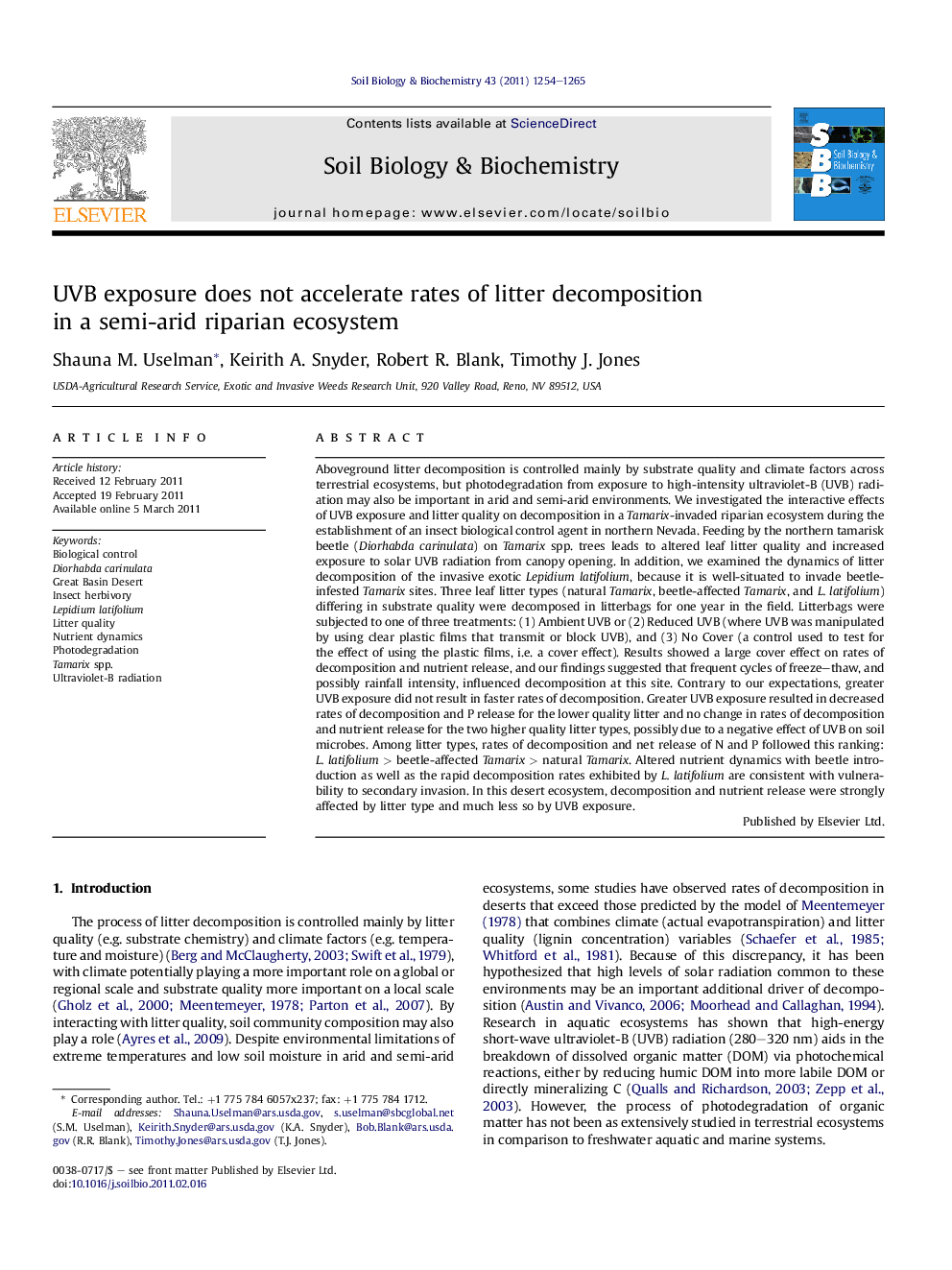| کد مقاله | کد نشریه | سال انتشار | مقاله انگلیسی | نسخه تمام متن |
|---|---|---|---|---|
| 2025302 | 1069991 | 2011 | 12 صفحه PDF | دانلود رایگان |

Aboveground litter decomposition is controlled mainly by substrate quality and climate factors across terrestrial ecosystems, but photodegradation from exposure to high-intensity ultraviolet-B (UVB) radiation may also be important in arid and semi-arid environments. We investigated the interactive effects of UVB exposure and litter quality on decomposition in a Tamarix-invaded riparian ecosystem during the establishment of an insect biological control agent in northern Nevada. Feeding by the northern tamarisk beetle (Diorhabda carinulata) on Tamarix spp. trees leads to altered leaf litter quality and increased exposure to solar UVB radiation from canopy opening. In addition, we examined the dynamics of litter decomposition of the invasive exotic Lepidium latifolium, because it is well-situated to invade beetle-infested Tamarix sites. Three leaf litter types (natural Tamarix, beetle-affected Tamarix, and L. latifolium) differing in substrate quality were decomposed in litterbags for one year in the field. Litterbags were subjected to one of three treatments: (1) Ambient UVB or (2) Reduced UVB (where UVB was manipulated by using clear plastic films that transmit or block UVB), and (3) No Cover (a control used to test for the effect of using the plastic films, i.e. a cover effect). Results showed a large cover effect on rates of decomposition and nutrient release, and our findings suggested that frequent cycles of freeze–thaw, and possibly rainfall intensity, influenced decomposition at this site. Contrary to our expectations, greater UVB exposure did not result in faster rates of decomposition. Greater UVB exposure resulted in decreased rates of decomposition and P release for the lower quality litter and no change in rates of decomposition and nutrient release for the two higher quality litter types, possibly due to a negative effect of UVB on soil microbes. Among litter types, rates of decomposition and net release of N and P followed this ranking: L. latifolium > beetle-affected Tamarix > natural Tamarix. Altered nutrient dynamics with beetle introduction as well as the rapid decomposition rates exhibited by L. latifolium are consistent with vulnerability to secondary invasion. In this desert ecosystem, decomposition and nutrient release were strongly affected by litter type and much less so by UVB exposure.
► We studied impacts of UVB and litter quality on decomposition in a semi-arid system.
► Greater UVB exposure did not result in faster decomposition rates.
► Experimental manipulations affected soil temperature regimes.
► Frequent freeze–thaw cycles likely increased decomposition.
► Litter type had a major impact on decomposition and nutrient release.
Journal: Soil Biology and Biochemistry - Volume 43, Issue 6, June 2011, Pages 1254–1265